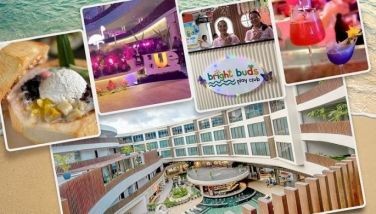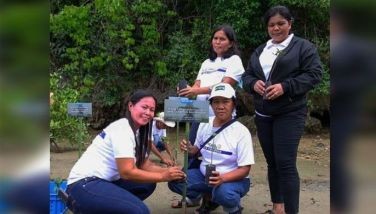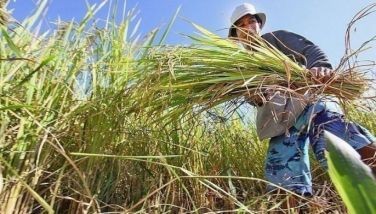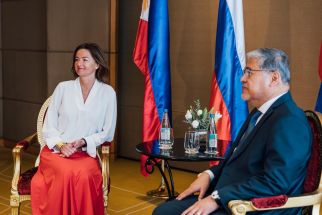Pinoy aquaculturists cited at Asian Fisheries Academy
DAGUPAN CITY, Philippines — Two outstanding Filipino aquaculturists were honored at the Asian Fisheries Academy (AFA) by the Society of Aquaculture Engineers of the Philippines Inc. (SAEP) and Philippine Aquaculture Society Inc. (PAS) for their outstanding leadership and devoted service for the advancement of aquaculture in the country.
Honored were Rafael Guerrero, promoter of all-male tilapia culture in the Philippines and Maximo Abesamis, pioneer in commercial scale in milkfish farming in sea cages.
Guerrero began his initial studies on tilapia sex reversal process for his doctoral dissertation at Auburn University in the US in early 1970s and continued the work at the Central Luzon State University. He observed that one of the most prominent problems in tilapia culture is overpopulation.
In the 1980s, Guerrero, with his wife Luzviminda, formed a research and development company for the commercial production of tilapia sex reversal feed for easy application of the technology by fish farmers. With the technology, fish farmers produce high yields of fast growing large-sized, all-male tilapia.
His pioneering works and contributions can be seen from the awards he has been receiving here and abroad. In 1978, he received the Ten Outstanding Young Men (TOYM) award for Aquaculture and Fisheries conferred by the Philippine Jaycees.
He also received Ten Outstanding Young Scientists (TOYS) award in 1980 by the National Science and Development Board. He was also an IBM Science and Technology awardee and a Rizal Pro Patria awardee.
Abesamis, meanwhile, was the first to introduce the modular system in fishpond (milkfish culture) in the Philippines. He was also the first to introduce the use of fertilizers in propagating zooplankton and phytoplankton or the so-called lablab for milkfish nutrition.
He also introduced the use of some chemicals like Gusathion and Brestan to control snails and other microorganisms that are harmful to the industry. His system was proven to be efficient that up to now, almost all fishpond operators are using the same method.
In 1992, Abesamis was the first to introduce fish pen for bangus production in Dagupan City which was eventually copied by many growers. In 1995, he discovered that salmon and bangus have the same characteristics and since salmon is widely cultured in Norway, he went there to study and observe the salmon production technology.
He saw that salmon are mass-produced in the ocean through the use of fish cages made of polyurethane materials. From there he imported fish cage materials used for salmon culture in Norway to the Philippines for mass producing bangus.
This technology was so successful Abesamis was recognized by the Association of Fish Producers in the Philippines for his invaluable contribution in fish production and steering the fisheries industry towards sustainable growth and development.
The awarding was highlighted by the foot printing of the awardees in front of the AFA building inside the Bureau of Fisheries and Aquatic Resources Center in this city for its Giant Steps Towards Dynamic Philippine Aquaculture similar to Philippine showbiz’s Walk of Fame, which immortalizes top stars in the industry through markers.
“Giant Steps Towards Dynamic Philippine Aquaculture” is dedicated to aquaculturists recognized for their sterling accomplishments by making giant steps to advance sustainable aquaculture in the Philippines, whose lives, works and ideals exemplify selfless dedication in service to the aquaculture industry—a remarkable legacy to the coming generations of Filipinos.
Guerrero and Abesamis now join other previous awardees for Giant Steps who included Herminio Rabanal, the Father of Modern Philippine Aquaculture; Pierre Morissens, a global scientist and catalyst of saline tilapia molobicus program; former House Speaker Jose de Venecia Jr. who is recognized as a prime mover of Penaeus vannamei farming in the Philippines; Emilia Quinitio who was responsible for the eventual commercialization of crab hatchery and nursery technology; Wilfredo Yap who conceptualized the Mariculture Park System for sustainable aquaculture in the sea; and Catalino dela Cruz, a pioneering expert on aquaculture engineering and integrated agri-aqua farming.
- Latest




























